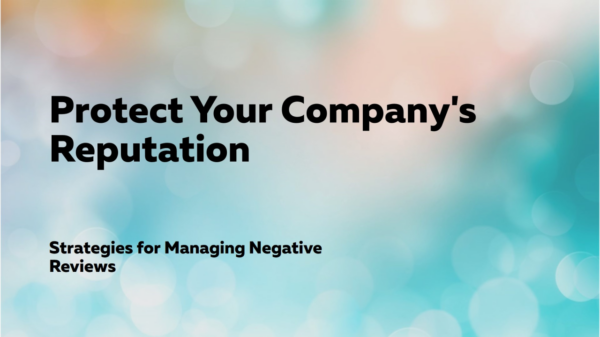Introduction
Definition of Online Reputation Management (ORM)
In today’s digital landscape, where information travels at lightning speed, managing your online reputation has never been more crucial. Online Reputation Management (ORM) refers to the practice of monitoring, influencing, and maintaining the public perception of an individual or brand on the internet. This includes everything from responding to customer reviews and engaging with social media comments to optimizing search engine results. You might wonder why ORM is so important—after all, it’s just a few reviews and comments, right? Well, in our hyper-connected world, a single negative review can spread like wildfire, impacting how potential customers perceive your business.
Importance of ORM in the Digital Age
With the rise of social media and review platforms, consumers have more power than ever to shape a brand’s reputation. ORM is essential for several reasons:
- Trust Building: A positive online reputation fosters trust among consumers. When potential customers see favorable reviews and testimonials, they are more likely to choose your business over competitors.
- Crisis Prevention: Effective ORM can help identify potential issues before they escalate into full-blown crises. By addressing negative feedback promptly, businesses can mitigate damage and maintain their credibility.
- Competitive Advantage: In crowded markets, a strong online reputation can set you apart from competitors. Customers are inclined to choose brands that have a solid reputation over those that don’t.

Image from WebAlive
Impact of Negative Reviews
Let’s explore how negative reviews can significantly influence consumer behavior and purchasing decisions. Did you know that approximately 93% of consumers read online reviews before making a purchase? This statistic highlights just how crucial these reviews are in shaping perceptions. Here are some key points to consider:
- Consumer Behavior: Negative reviews can deter potential customers from engaging with your brand. Research shows that around 70% of consumers will avoid a business if they see one negative review.
- Purchasing Decisions: Studies indicate that consumers are more likely to trust online reviews as much as personal recommendations. A single negative review can lead to lost sales and diminished customer loyalty.
Consequences for Businesses
The consequences of neglecting online reputation management can be severe. Here’s a brief overview of what businesses might face:
- Loss of Customers: A tarnished reputation can lead to a significant drop in customer acquisition and retention rates.
- Revenue Decline: Negative perceptions directly impact sales. According to a study by Harvard Business School, each star rating increase on Yelp results in a 5-9% increase in revenue for restaurants.
- Long-Term Damage: The effects of negative reviews can linger, making it challenging for businesses to recover their reputation even after addressing the issues.

Image from OutboundEngine
Understanding Negative Online Reviews
Types of Negative Reviews
When it comes to online reviews, not all negative feedback is created equal. Understanding the different types of negative reviews can help you navigate them more effectively. Let’s explore the two primary categories: constructive criticism and malicious attacks.
- Constructive Criticism:
- These reviews aim to provide helpful feedback that can lead to improvements. For example, a customer might say, “The product was great, but it took too long to arrive.” This type of feedback can offer valuable insights into areas that need attention.
- Malicious Attacks:
- On the other hand, some reviews are purely negative without any constructive intention. These might include personal attacks or unfounded claims, such as “This company is a scam!” Such reviews can be damaging and often stem from personal grievances rather than actual experiences.
Common Complaints:
You might wonder what types of issues tend to generate negative reviews. Here are some common complaints that customers often express:
- Service Quality: Customers may feel that they received poor service, whether it’s due to unhelpful staff or long wait times.
- Product Issues: Complaints about defective products, incorrect orders, or items not matching their descriptions are frequent.
- Pricing Concerns: Some customers may feel that they didn’t get value for their money, leading to dissatisfaction and negative feedback.
Psychology Behind Negative Reviews
Now that we’ve identified the types of negative reviews, let’s delve into the psychology behind why consumers leave them. Understanding this can help you respond more effectively.Why Consumers Leave Negative Reviews:
People often feel compelled to share their experiences when they’re unhappy. Here are a few reasons why:
- Emotional Release: Leaving a negative review can serve as an emotional outlet for frustrated customers. It allows them to express their dissatisfaction publicly.
- Seeking Resolution: Many consumers hope that by voicing their concerns online, they will prompt a response from the business and receive compensation or an apology.
- Influencing Others: Some individuals leave negative reviews to warn others about their experiences, acting as self-appointed watchdogs for potential customers.
The Emotional Impact on Businesses and Owners:
Negative reviews can take a toll on business owners emotionally. Here’s how:
- Stress and Anxiety: Constantly seeing negative feedback can create stress and anxiety for business owners who care deeply about their reputation and customer satisfaction.
- Impact on Morale: A series of negative reviews can affect employee morale, especially if staff members feel they are being unfairly criticized.
- Fear of Reputation Damage: Business owners may worry about how negative reviews will impact their brand image and long-term success.

Image from Search Engine Journal
Strategies for Handling Negative Reviews
Dealing with negative reviews can feel overwhelming, but it doesn’t have to be! Let’s explore effective strategies that can turn a potentially damaging situation into an opportunity for growth and connection. From monitoring your online presence to responding thoughtfully, every step can enhance your brand’s reputation.
Monitor Your Online Presence
Tools for Tracking Reviews
In today’s digital age, staying informed about what customers are saying is crucial. Here are some handy tools to help you keep track:
- Google Alerts: Set up alerts for your business name and related keywords. This way, you’ll receive notifications whenever your brand is mentioned online, allowing you to respond promptly.
- Social Media Monitoring Tools: Platforms like Hootsuite or Mention can help you track conversations and reviews across various social media channels. These tools enable real-time engagement, ensuring no comment goes unnoticed.
Importance of Regular Check-Ins
Regularly checking review platforms is essential for maintaining a positive online presence. Consider these points:
- Consistent Engagement: Schedule regular intervals to check platforms like Yelp, Google My Business, and TripAdvisor. This helps you stay ahead of new reviews and address concerns before they escalate.
- Building Trust: When customers see that you’re active and engaged, they’re more likely to trust your brand. Regular check-ins demonstrate that you value their feedback and are committed to improvement.

Image from LinkedIn
Responding to Negative Reviews
Timeliness
Responding quickly to negative reviews is key to showing that you care. Here’s why it matters:
- Quick Acknowledgment: Aim to respond within 24-48 hours. A timely response shows that you take customer feedback seriously and are eager to resolve any issues.
- Public Visibility: Addressing concerns publicly can also reassure potential customers that you’re proactive and responsive.
Professionalism
Maintaining a calm and professional tone is vital, even when faced with harsh criticism. Here are some tips:
- Stay Composed: Resist the urge to respond defensively. Take a moment to breathe and structure your response thoughtfully.
- Clear Communication: Use straightforward language to address the issue. This keeps the conversation respectful and focused on the matter at hand.
Empathy
Acknowledging the reviewer’s feelings can transform a negative experience into a constructive dialogue. Consider these strategies:
- Validate Their Experience: Start your response with phrases like, “I understand how frustrating this must have been.” This shows that you’re listening and care about their feelings.
- Personal Touch: Reference specific details from their review to create a more personalized response. This demonstrates genuine engagement with their concerns.
Offering Solutions
Proposing resolutions can help turn a negative review into a positive interaction. Here’s how to do it effectively:
- Practical Solutions: If appropriate, offer solutions such as refunds, replacements, or discounts. This shows your willingness to make things right.
- Encourage Further Dialogue: Invite the reviewer to contact you directly for further assistance. This approach can lead to a more positive outcome and potentially turn a dissatisfied customer into a loyal one.

Image from LinkedIn
Learning from Feedback
Analyzing Patterns in Negative Reviews
Negative reviews can provide valuable insights into your business. Here’s how to leverage them:
- Identify Trends: Regularly analyze feedback to spot recurring issues. Are multiple reviews mentioning slow service? This trend could indicate a need for process improvement.
- Use Data Effectively: Consider employing sentiment analysis tools to quantify feedback and gain a clearer picture of overall customer satisfaction.
Implementing Changes
Once you’ve identified areas for improvement, it’s time to take action. Here’s how to implement changes effectively:
- Make Actionable Adjustments: Address specific concerns highlighted in reviews. For instance, if several customers mention product quality, investigate and enhance your supply chain.
- Communicate Updates: Let your customers know about the changes you’ve made based on their feedback. This transparency builds trust and shows that their opinions matter.
Encouraging Positive Reviews
Strategies for Soliciting Feedback
Encouraging satisfied customers to share their positive experiences can help balance the narrative. Consider these strategies:
- Follow-Up Communications: After a purchase, send a friendly email thanking customers and inviting them to leave a review. Keep the tone light and genuine.
- Incentives for Participation: Offer small incentives, such as discounts on future purchases, to encourage customers to leave positive feedback. Ensure that this practice complies with platform guidelines.
Creating a System for Collecting Testimonials
Establishing a streamlined process for gathering reviews can enhance your credibility. Here’s how:
- Dedicated Review Page: Create a section on your website solely for customer reviews. This simplifies the process for customers and encourages them to share their thoughts.
- Utilize Review Management Software: Platforms like Trustpilot or Feefo can help streamline the collection and display of reviews, making it easier for you to manage customer feedback.
Managing False or Malicious Reviews
Steps for Dealing with Fake Reviews
If you encounter false or malicious reviews, it’s important to handle them effectively. Here’s what to do:
- Report Inappropriate Content: Most review platforms have a process for reporting fake or malicious reviews. Gather any supporting evidence and submit it for review.
- Respond Publicly and Calmly: Address the review in a professional manner, stating your position while maintaining your composure. This shows potential customers that you take these matters seriously.
Legal Considerations
If a review is particularly damaging, understanding your legal options is crucial:
- Know Your Rights: Familiarize yourself with the laws regarding online reviews in your jurisdiction. This knowledge can be invaluable in protecting your business.
- Consult Legal Professionals: If necessary, seek legal advice to understand your options for dealing with defamatory reviews.
By employing these strategies, you can effectively manage negative reviews and turn them into opportunities for strengthening your brand and enhancing customer relationships.
Building a Strong Online Reputation
Creating a robust online reputation is essential for any business striving to succeed in today’s digital landscape. A positive online presence not only attracts new customers but also fosters loyalty among existing ones. Let’s explore effective strategies for building and maintaining a strong online reputation.
Creating Positive Content
In the digital age, generating positive online content is crucial for building and maintaining a strong reputation. Let’s explore why this is important and how you can effectively engage your audience.
- Importance of Generating Positive Online Content:
- Establishing Authority: Regularly publishing high-quality content, such as blogs and social media posts, helps position your brand as an authority in your industry. This not only builds trust but also encourages customers to turn to you for information and solutions.
- Enhancing Visibility: Positive content improves your search engine optimization (SEO), making it easier for potential customers to find you online. Engaging articles and posts can drive traffic to your website, increasing your chances of conversion.
- Engaging with Customers through Storytelling:
- Showcasing Success Stories: Sharing customer success stories or testimonials can create a powerful connection with your audience. For example, a case study highlighting how your product solved a problem for a client can resonate deeply with potential buyers.
- Utilizing Multimedia: Incorporate images, videos, and infographics into your content to make it more engaging. Visual storytelling can capture attention and convey messages more effectively than text alone.
Consistency in Customer Service
Providing consistent, high-quality service is fundamental to earning positive reviews and fostering customer loyalty. Let’s discuss how this consistency translates into a strong online reputation.
- How Consistent, High-Quality Service Leads to Positive Reviews:
- Customers are more likely to leave positive reviews when they have consistently good experiences with your brand. This includes everything from the quality of your products to the responsiveness of your customer service team.
- A study by Zendesk found that 66% of consumers say they would switch brands if they had a bad customer service experience. This highlights the importance of delivering quality service at every touchpoint.
- Training Staff to Handle Customer Interactions Effectively:
- Empower Employees: Providing staff with training on customer service best practices ensures they are equipped to handle inquiries and complaints professionally. Role-playing scenarios can be an effective way to prepare them for real-life situations.
- Encourage Feedback: Create an environment where employees feel comfortable sharing feedback about customer interactions. This can lead to continuous improvement in service delivery.
By focusing on creating positive content and maintaining consistent customer service, businesses can build a robust online reputation that attracts new customers and retains existing ones. Engaging storytelling and effective training are key components in this process, ensuring that both your brand message and customer interactions reflect your commitment to excellence.

Image from R&B Communications, Inc.
Case Studies
Examples of Successful Reputation Management
Understanding how businesses have effectively managed their reputations can provide valuable insights for your own strategies. Here are a few compelling case studies that illustrate how negative reviews were transformed into opportunities for growth and improvement.
1. Starbucks: Turning a Crisis into Opportunity
- Background: In 2018, Starbucks faced a significant backlash after an incident of racial bias at one of its stores went viral. The negative publicity threatened the company’s reputation and customer trust.
- Strategies Used:
- Swift Action: Starbucks quickly closed all its stores for a day to conduct anti-bias training for over 175,000 employees. This decisive action demonstrated accountability and a commitment to change.
- Transparent Communication: The company openly acknowledged the incident and communicated its plans to address the issue, which helped rebuild trust with customers.
- Outcomes Achieved:
- Following the training initiative, Starbucks reported a 10% increase in customer satisfaction ratings, showcasing that proactive measures can effectively mend reputational damage.
2. Domino’s Pizza: Acknowledging Shortcomings
- Background: In the late 2000s, Domino’s faced severe criticism regarding the quality of its pizza, leading to a decline in customer loyalty and negative reviews.
- Strategies Used:
- Honest Advertising: Instead of shying away from criticism, Domino’s launched an ad campaign that openly acknowledged its product shortcomings. The campaign featured real customer complaints and showcased their commitment to improvement.
- Product Revamp: The company revamped its pizza recipe based on customer feedback, focusing on quality ingredients and better preparation techniques.
- Outcomes Achieved:
- This transparent approach resonated with customers, leading to a remarkable turnaround in sales and public perception. Domino’s saw a significant increase in positive reviews and regained market share.
3. Riverfront Inn: Leveraging Reputation Management Software
- Background: A mid-sized hospitality company, Riverfront Inn, faced a crisis when multiple negative reviews surfaced simultaneously across various platforms.
- Strategies Used:
- Implementation of Reputation Management Software: By utilizing tools like Trustpilot, Riverfront Inn monitored reviews in real-time and responded promptly to customer feedback.
- Engagement with Customers: The hotel actively engaged with reviewers, addressing concerns directly and showcasing improvements based on feedback.
- Outcomes Achieved:
- Within six months of implementing these strategies, Riverfront Inn increased its positive review rate by 40%, demonstrating the effectiveness of proactive reputation management.
4. Johnson & Johnson: Navigating the Tylenol Crisis
- Background: In the early 1980s, Johnson & Johnson faced a major crisis when several people died after consuming tampered Tylenol capsules. This incident severely impacted the brand’s reputation.
- Strategies Used:
- Proactive Measures: The company quickly recalled over 31 million bottles of Tylenol from store shelves, prioritizing consumer safety above profits.
- Transparent Communication: J&J communicated openly with the public about the steps they were taking to ensure safety, including the introduction of tamper-resistant packaging.
- Outcomes Achieved:
- J&J’s swift and transparent response not only restored public trust but also set new standards for crisis management in the pharmaceutical industry.
These case studies illustrate that effective reputation management involves swift action, transparency, and a commitment to improvement. By learning from these examples, businesses can develop strategies that not only address negative reviews but also enhance their overall reputation in the marketplace.








































